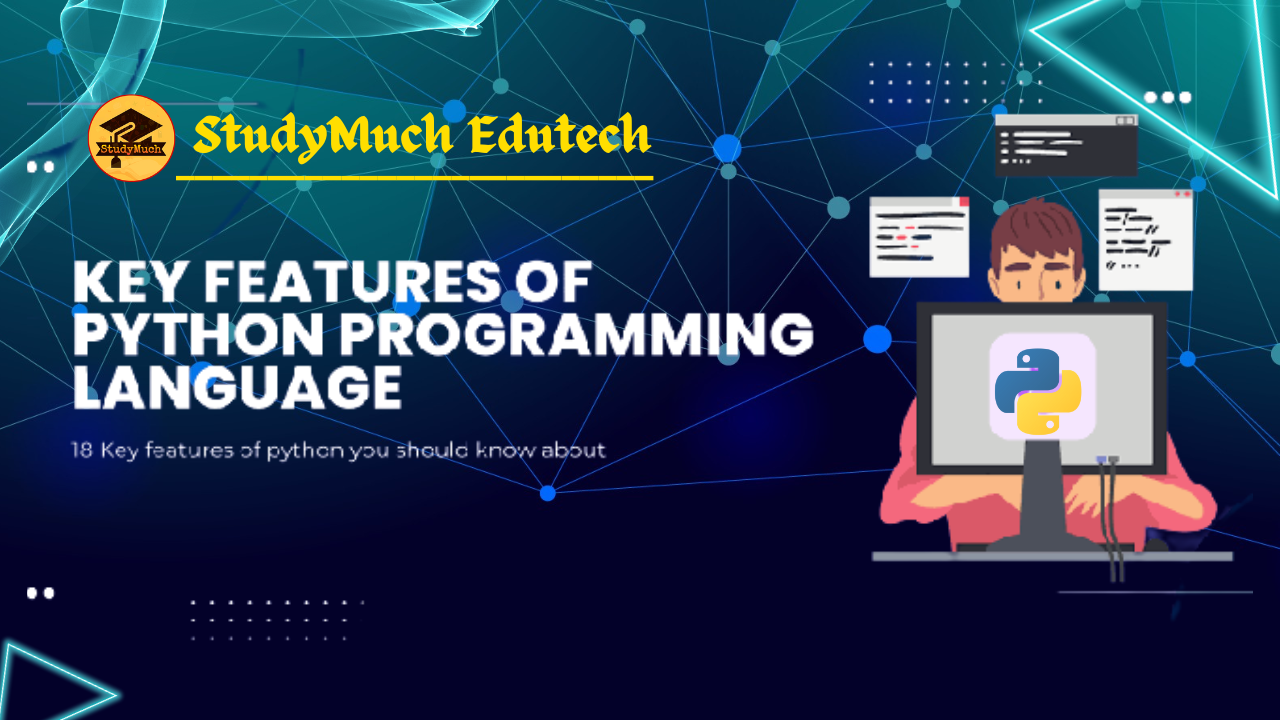Key Features of Python Programming

Key Features of Python Programming
Python, a versatile and powerful programming language, has become incredibly popular in the world of software development. Its simplicity, readability, and extensive library support make it an ideal choice for beginners and experienced developers alike. In this blog post, we will explore the key features of Python programming that have contributed to its widespread adoption and success.
1. Readability and Simplicity
Python is celebrated for its clean and readable syntax. Using indentation (whitespace) to structure code blocks not only enforces consistent formatting but also makes the code visually appealing. This design choice ensures that Python code is easy to write, understand, and maintain. Its clear and concise style makes it a great language for both newcomers and experienced developers.
# Python code example def greet(name): print(f"Hello, {name}!")

2. High-Level Language
Python is a high-level programming language, which means it abstracts many low-level details and offers a simplified way of expressing complex ideas. Programmers can focus on problem-solving and logic without worrying about memory management or other system-specific concerns. This makes Python an excellent choice for various application domains, from web development to data science.
3. Cross-Platform Compatibility
Python is available on various platforms, including Windows, macOS, and Linux. This cross-platform compatibility ensures that code written in Python can be easily run and used on different operating systems without modification. This is especially valuable for projects that need to be deployed in heterogeneous environments.
4. Extensive Standard Library
Python comes with a vast and robust standard library that contains modules for a wide range of tasks. These modules offer pre-written code to simplify common programming tasks, saving developers time and effort. Whether you’re working with file handling, networking, or data manipulation, Python’s standard library has you covered.
5. Community and Third-Party Libraries
Python’s strong and enthusiastic community has produced an abundance of third-party libraries and frameworks that extend the language’s capabilities. Libraries such as NumPy, Pandas, TensorFlow, and Django, among many others, provide tools for data analysis, machine learning, web development, and more. These libraries have transformed Python into a versatile language suitable for a vast array of applications.
6. Dynamic Typing
Python employs dynamic typing, which means that you don’t need to declare variable types explicitly. The interpreter determines the variable type at runtime. While this can lead to more concise code, it also provides flexibility and can speed up the development process.
# Dynamic typing in Python x = 5 # x is an integer x = "Hello" # x is now a string print(x) #Hello
7. Interpreted Language
Python is an interpreted language, which means that the code is executed line by line by the Python interpreter. This allows for rapid development, debugging, and prototyping. While it may be slower than compiled languages in some cases, the ease of development and debugging often outweigh this drawback.
8. Object-Oriented Programming (OOP)
Python supports object-oriented programming principles. Everything in Python is an object, allowing for the creation of reusable and organized code. Object-oriented features like encapsulation, inheritance, and polymorphism are readily available for developers to use.
9. Open Source and Community-Driven
Python is an open-source language with a vibrant community of developers who continuously contribute to its growth and development. This open-source nature ensures that Python remains free to use and benefits from regular updates, bug fixes, and enhancements.
10. Cross-Domain Applications
Python is a versatile language suitable for various applications, including:
- Web Development: Frameworks like Django and Flask are popular choices.
- Data Analysis: Libraries like NumPy, Pandas, and Matplotlib are essential for data scientists.
- Machine Learning and AI: Libraries such as TensorFlow, Keras, and scikit-learn are widely used.
- Scientific Computing: Python is a valuable tool for scientific research and simulation.
- Automation: Python can automate tasks and simplify daily activities.
Conclusion;
Python’s features, including its simplicity, versatility, and rich ecosystem, have made it a go-to language for programmers across the world. Whether you are a beginner looking to learn programming or an experienced developer working on complex projects, Python’s features make it an excellent choice for a wide range of applications. Its thriving community and extensive library support ensure that Python will continue to play a significant role in the world of software development for years to come. I hope you have understood these all “Key Features of Python Programming“, but if you have any doubt then you can ask in comment section.
Learn More;


0 Comments